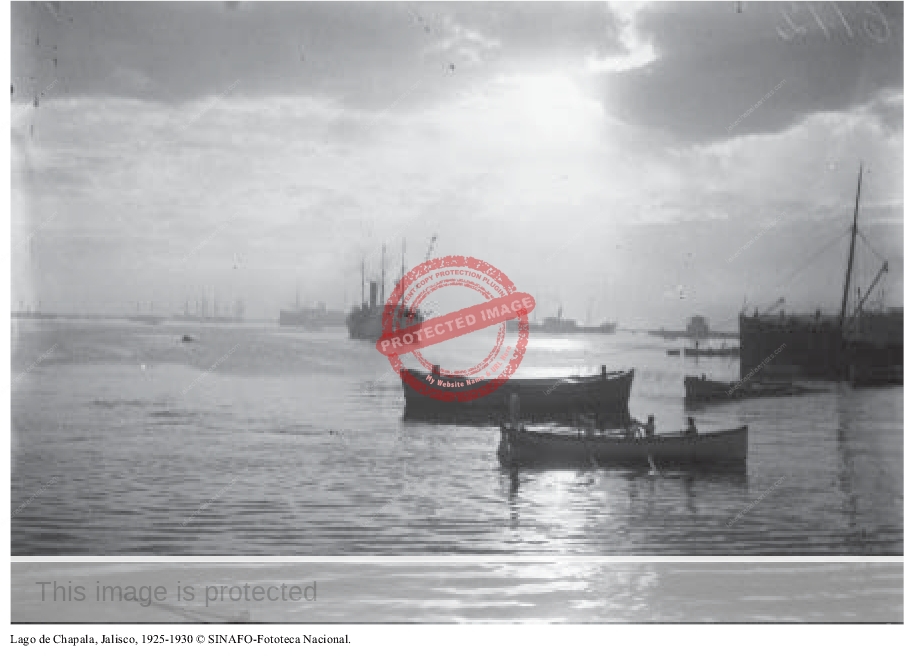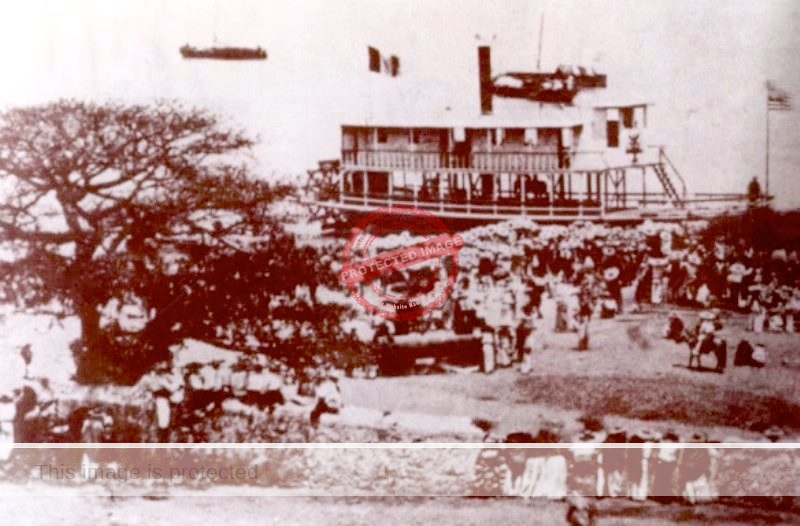This is the third in a mini series identifying some examples of photo identification errors related to the Lake Chapala area.
Mexico’s National Photo Archive (Fototeca Nacional) includes this unattributed photo of ships and boats on Lake Chapala captioned as “Lago de Chapala, Jalisco, 1925-1930.” The photo was used in an internal 2004 INAH newsletter (later published online) which had numerous illustrations related to fishing.

Unattributed photo of ships and boats. Catalogued in National Photo Archive as “Lago de Chapala, Jalisco, 1925-1930. © SINAFO-Fototeca Nacional.”
Something isn’t quite right here. Lake Chapala did have a sizable fishing fleet during much of the twentieth century. The catch of highly prized whitefish peaked at 150 tons in 1946, and the charal catch peaked in excess of 3000 tons in 1968. But the ships and boats depicted above are very different to the various types of fishing vessels and cargo-carrying boats normally associated with the lake. Several appear to be large steamships. While Chapala did have numerous steamships plying the lake waters at one time or other between the 1860s and 1940s, it never had this many at one time—or any as large as the larger ones in the photograph.
By way of comparison, here is an image (photographer and date unknown) of the vapor Libertad on Lake Chapala. Libertad was the first iron steamship built in San Francisco, and the first steamship launched on Lake Chapala (in 1868) and was, to the best of my knowledge, the largest steamship ever to grace the lake. The Libertad capsized, with the loss of 28 lives, near Ocotlán on 14 March 1889.

Vapor Libertad. Photographer unknown. Date: c 1885?
In the absence of knowing when the National Photo Archive image was taken, or who the photographer was, it may prove impossible to give it an accurate caption, but… Chapala between 1925 and 1930? I don’t think so.
Source
- INAH. 2004. Diario de Campo (Boletín Interno de los investigadores del área de antropología). No 72 (December 2004), p 47.
My 2022 book Lake Chapala: A Postcard History uses reproductions of more than 150 vintage postcards to tell the incredible story of how Lake Chapala became an international tourist and retirement center. Chapter 8 is devoted to Fishing and Environmental Change.
Comments, corrections and additional material welcome, whether via comments feature or email.
Tony Burton’s books include “Lake Chapala: A Postcard History” (2022), “Foreign Footprints in Ajijic” (2022), “If Walls Could Talk: Chapala’s historic buildings and their former occupants” (2020), (available in translation as “Si Las Paredes Hablaran”), “Mexican Kaleidoscope” (2016), and “Lake Chapala Through the Ages” (2008).
You need a Sherlock Holmes award for taking on these mysteries—thanks–I’m enjoying your research and the history.
Haha – where do I apply?? Thanks for the kind words. Keep well.
The first photo appears as if the background scenes for the film that was made here about WWII. It evidently reminded the director that it would be a good background for Hawaii. My husband was involved in the filming as he had a boat. All the boats were copies of the originals but smaller.
Hi Dinah, That is so true! It does look somewhat like the film “In Harm’s Way,” https://lakechapalaartists.com/?p=8474 – parts of which were shot at Lake Chapala. I might have to watch the movie again, just in case . . . Best, Tony